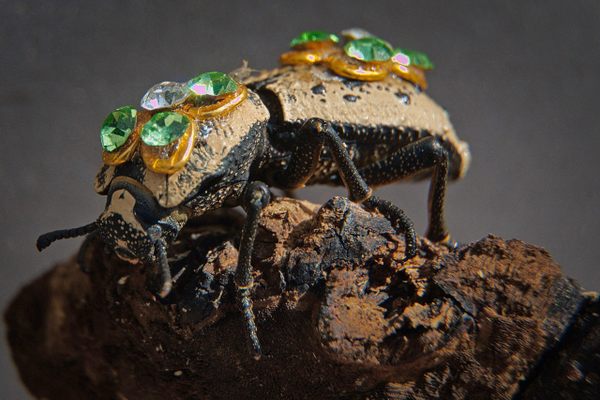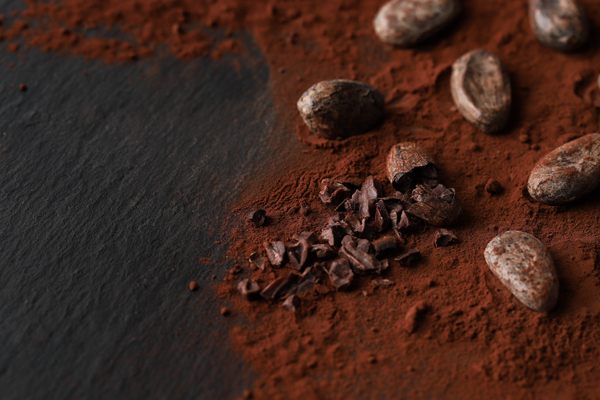The Brutal and Bloody History of the Mesoamerican Ball Game, Where Sometimes Loss Was Death
A ball court in Mexico (photograph by Dennis Jarvis)
The Olmecs started it, the Maya tweaked it, and the Aztecs nailed it. The Mesoamerican Ballgame, played with a solid rubber ball — weighing at around 10 pounds — and teams of one to four people, makes a regular appearance throughout Pre-Columbian history. Though added later, stone ball courts have been found from Arizona to Nicaragua.
A ceramic depiction of a ball game in the Museo Rufino Tamayo of Oaxaca (photograph by Thomas Aleto)
Though the exact rules of the game aren’t known, it is generally believed that the game was played more or less like today’s volleyball (net‐less) or racquetball. Players wore helmets, pads and thick protective yokes around their mid‐section and kept the ball in play by hitting it off their hips.
The Mesoamerican ball game makes its first appearance among the Olmec around 1500 BC in the central Gulf Coast of Mexico, an area known at the time for latex production. Many balls have been discovered in the region as part of burials and as ritual offerings at shrines, suggesting the balls and other ballgame accoutrements were a sign of status or wealth. In fact, this idea has been reinforced by the evidence of ball courts being found near chief’s homes in Olmec sites. The game the Olmecs played was associated with prestige and social standing, and only the wealthy and therefore upper class could afford to put on a game. The giant stone heads found in the region also depict chiefs wearing the ball playing helmet.
Olmec head in the Parque Museo La Venta in Mexico (photograph by Steven Bridger)
Carving of a human sacrifice after a ball game in Veracruz, Mexico (photograph by Thomas Aleto)
The game continued to be played throughout Mesoamerica when it was adopted by the Maya, who added their own special twist. Humans and the lords of the underworld battled it out by playing the game, according to the creation story the known as the Popol Vuh. In this way, the ball court was a portal to Xibalba — the Mayan underworld. The Maya used the game as a stand‐in for warfare, settling territory disputes and hereditary issues, and to foretell the future. Captives of wars were forced to play (undoubtedly rigged) games that resulted in their sacrifice when they lost.
Sacrificed ball player in the Anthropolgy Museum of Xalapa, Mexico (photograph by Maurice Marcellin)
Two ball players on a carving in Guatemala (photograph by Simon Burchell)
The Aztecs continued this proud tradition of loser‐lose‐all, as many vases and sculptures depict the inevitable decapitation of the losing team. There are even some depictions of ball players playing with the heads of the losers in place of a ball. Whether this actually occurred is up to artistic speculation. The Spanish who observed the game reported horrendous injuries to those who played it — deep bruising requiring lancing, broken bones, and even death when a player was hit in the head or by an unprotected bit by the heavy ball.
A ball court in Oaxaca (photograph by Matt Barnett)
Shadow of a stone hole at a ball court (photograph by Erik Bremer)
The Great Ball Court at Chichén-Itzá in Mexico (photograph by Daryl Mitchell)
There are many of these fine ball courts one can visit today. The great ball court at Chichen Itza, built around 800 AD, is the largest and best preserved yet found. The Maya added the stone ring for bonus point opportunities, but putting the ball through the hoop was a very rare event. In fact, mayan ball courts can be explored at just about every archaeological site including: Palenque, Yaxchilan, Tikal, Uxmal, Ek Balam, Copan, and Calakmul. And while you can’t do much playing now at these historic sites, a slightly less gruesome version of the game called Ulama still survives is played in Mexico today.
An ulama player (photograph by Manuel Aguilar)










Follow us on Twitter to get the latest on the world's hidden wonders.
Like us on Facebook to get the latest on the world's hidden wonders.
Follow us on Twitter Like us on Facebook